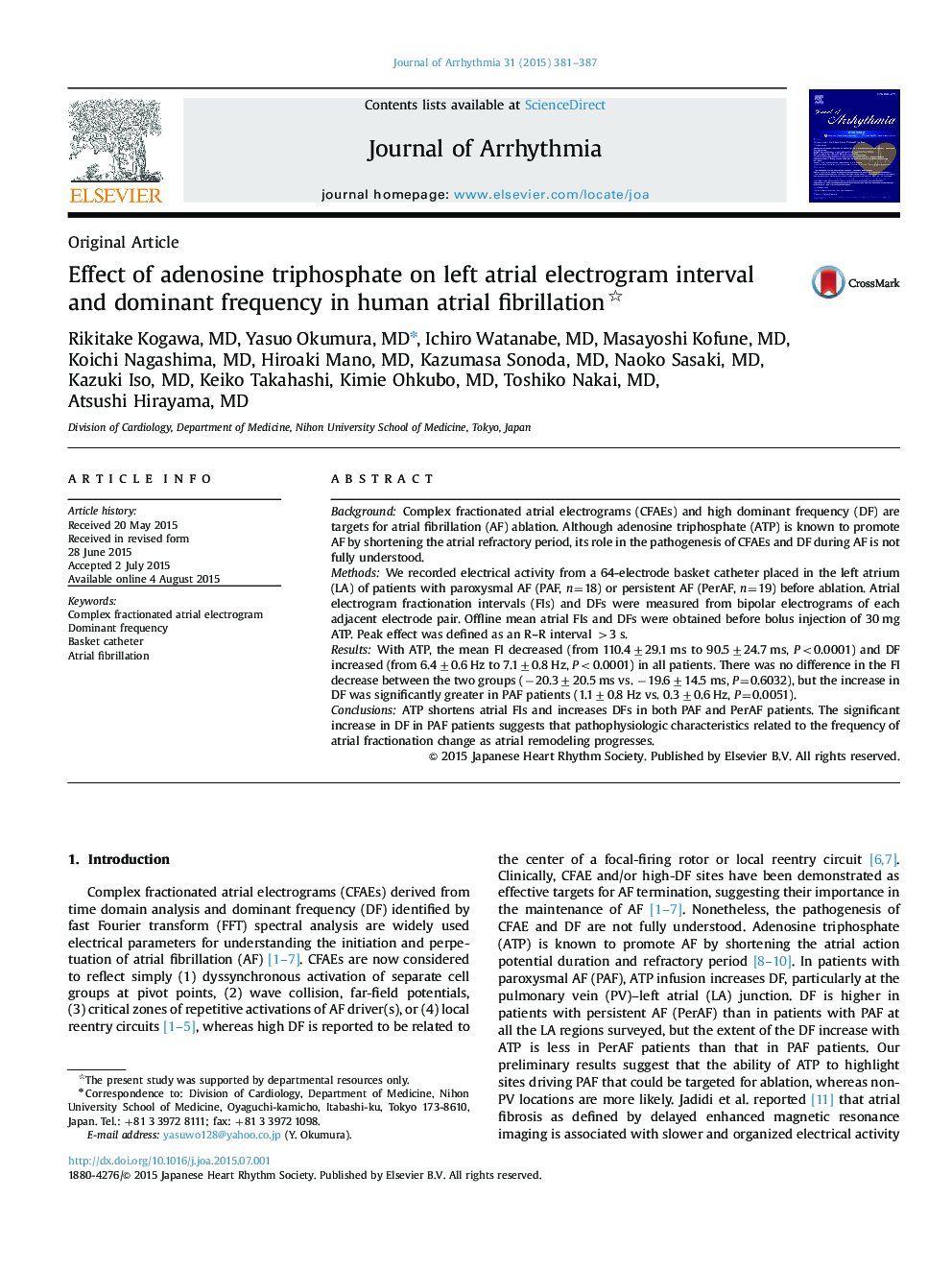| Article ID | Journal | Published Year | Pages | File Type |
|---|---|---|---|---|
| 2957520 | Journal of Arrhythmia | 2015 | 7 Pages |
BackgroundComplex fractionated atrial electrograms (CFAEs) and high dominant frequency (DF) are targets for atrial fibrillation (AF) ablation. Although adenosine triphosphate (ATP) is known to promote AF by shortening the atrial refractory period, its role in the pathogenesis of CFAEs and DF during AF is not fully understood.MethodsWe recorded electrical activity from a 64-electrode basket catheter placed in the left atrium (LA) of patients with paroxysmal AF (PAF, n=18) or persistent AF (PerAF, n=19) before ablation. Atrial electrogram fractionation intervals (FIs) and DFs were measured from bipolar electrograms of each adjacent electrode pair. Offline mean atrial FIs and DFs were obtained before bolus injection of 30 mg ATP. Peak effect was defined as an R–R interval >3 s.ResultsWith ATP, the mean FI decreased (from 110.4±29.1 ms to 90.5±24.7 ms, P<0.0001) and DF increased (from 6.4±0.6 Hz to 7.1±0.8 Hz, P<0.0001) in all patients. There was no difference in the FI decrease between the two groups (−20.3±20.5 ms vs. −19.6±14.5 ms, P=0.6032), but the increase in DF was significantly greater in PAF patients (1.1±0.8 Hz vs. 0.3±0.6 Hz, P=0.0051).ConclusionsATP shortens atrial FIs and increases DFs in both PAF and PerAF patients. The significant increase in DF in PAF patients suggests that pathophysiologic characteristics related to the frequency of atrial fractionation change as atrial remodeling progresses.
